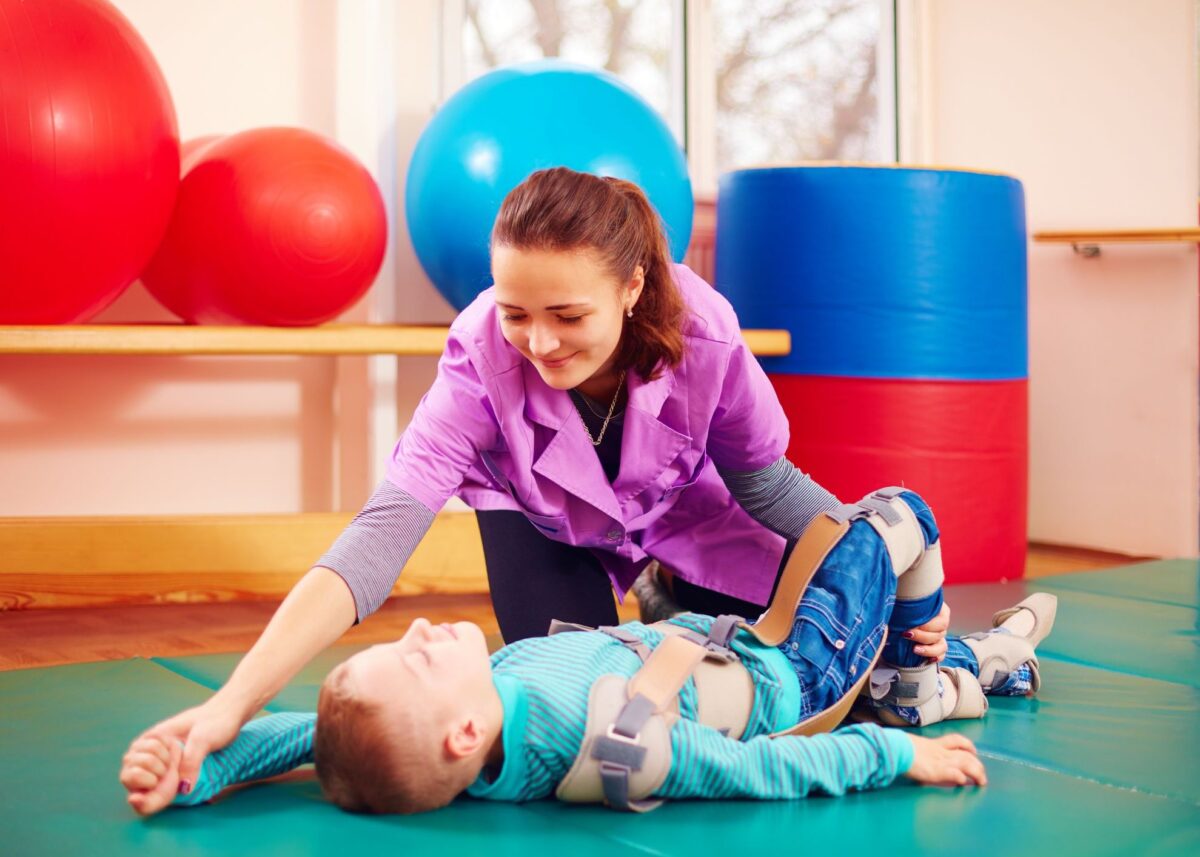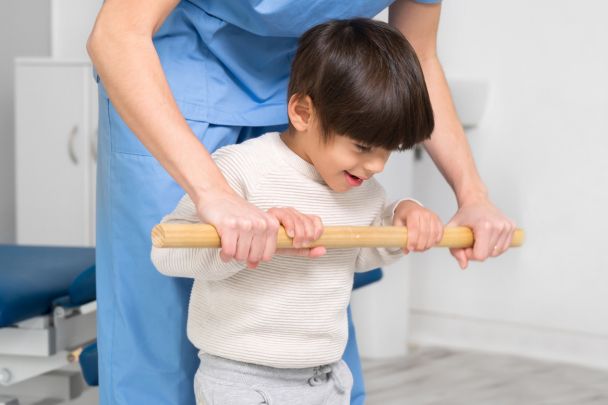For many parents, seeing their child struggle with muscle stiffness and tightness can be difficult and confusing. High muscle tone, also known as hypertonia, is a common symptom in children with cerebral palsy and significantly impacts their mobility and comfort.
What is High Muscle Tone?
High muscle tone refers to the increased stiffness or tightness in muscles, making it difficult for a child to move freely. In children with cerebral palsy, this occurs because the brain sends abnormal signals to the muscles, causing them to contract more than necessary. As a result, everyday movements, like reaching for a toy or taking a step, can become challenging or even painful.
How High Muscle Tone Affects Movement
Children with high muscle tone often have muscles that are constantly tight, even when they’re at rest. This stiffness can make simple tasks — like walking, holding objects, or even sitting — more difficult.
Hypertonia can vary in severity, but common signs include:
- Muscle stiffness: Muscles that feel tight and are resistant to movement.
- Abnormal posture: The child may seem to always be in an awkward or strained position.
- Difficulty with joint movement: Trouble bending or straightening the knees, elbows, or wrists.
- Toe walking: A common issue where the child walks on their toes due to muscle tightness in the legs.
- Limited range of motion: Difficulty moving limbs through their full range, such as raising arms or kicking legs.
What Causes High Muscle Tone?
High muscle tone in cerebral palsy is caused by damage to the parts of the brain that regulate muscle control. This damage typically occurs before, during, or shortly after birth. The effect of hypertonia varies from child to child, with some experiencing mild stiffness while others struggle with more severe muscle rigidity. Hypertonia can be triggered by various factors, including:
- Premature birth: Premature babies are at a higher risk of brain injury that may lead to high muscle tone.
- Infections during pregnancy: Conditions like cytomegalovirus or toxoplasmosis can increase the likelihood of cerebral palsy and hypertonia.
- Lack of oxygen: When a baby’s brain doesn’t receive enough oxygen during labor or delivery, it can result in damage, leading to hypertonia.
- Birth complications: Difficulties during delivery, such as prolonged or complicated labor, may cause brain damage, leading to hypertonia.
- Genetic factors: In some cases, cerebral palsy and hypertonia can be inherited through genetic factors.
Types of High Muscle Tone in Children with Cerebral Palsy
Children with cerebral palsy experience high muscle tone in different ways depending on the type and severity of their condition:
- Spastic Cerebral Palsy: The most common form, where high muscle tone leads to stiff, jerky movements.
- Dystonia: A type of cerebral palsy where muscle tone can fluctuate between being too high or too low, causing unpredictable movements.
- Rigidity: A more severe form where muscles are stiff and resist all movements, making it difficult for the child to function.
Depending on the type of high muscle tone a child has, their treatment plan may include physical and occupational therapy, medication, or surgery.
Managing High Muscle Tone in Cerebral Palsy
There are several approaches to managing high muscle tone, each aimed at improving comfort, increasing mobility, and preventing complications like joint deformities. Treatments often involve a combination of therapies, medications, and sometimes surgery, depending on the severity of the hypertonia.
Physical Therapy

Physical therapy is a critical part of managing high muscle tone. A physical therapist works with your child to perform exercises that can stretch tight muscles and improve flexibility. The goal is to help reduce stiffness and improve movement, enabling your child to engage more easily in everyday activities.
Medications and Injections
- Oral Medications: These can help relax the muscles and reduce stiffness. However, the effects vary, and medications must be monitored closely for side effects.
- Botox Injections: Botox is often injected into specific muscles to reduce spasticity temporarily, making movement easier for several months at a time.
- Baclofen Pumps: For more severe cases, a surgically implanted pump can deliver medication directly to the spinal cord, reducing muscle tone throughout the body.
Orthotic Devices
Braces and orthotic devices, such as ankle foot orthoses (AFOs), can provide support to stiff muscles and joints. These devices help keep the limbs in proper alignment, preventing deformities and improving the child’s ability to walk or move more efficiently.
Surgical Options
In cases where high muscle tone severely affects a child’s ability to move or function, surgery may be considered. Surgeries like tendon release or selective dorsal rhizotomy aim to relieve tightness and spasticity by lengthening muscles or cutting certain nerves to reduce muscle tone.
Physical Therapy and Exercises
Physical therapy is often the first line of treatment for managing hypertonia. Therapists work with children to develop strength, flexibility, and range of motion. The goal is to improve muscle control and reduce stiffness, allowing the child to move more freely. Some common therapeutic interventions include:
- Stretching exercises: Gentle stretches can help loosen stiff muscles, reduce pain, and increase flexibility.
- Strengthening exercises: Building muscle strength in unaffected areas helps children compensate for weakness caused by hypertonia.
- Functional training: Activities that focus on improving everyday movements, such as walking or grasping objects, can enhance a child’s ability to perform daily tasks.
- Aquatic therapy: Water-based exercises can help children with cerebral palsy improve balance, coordination, and muscle control.
The Importance of Regular Monitoring
As your child grows, their muscle tone and needs will change. Regular check-ups with a board-certified orthopedic surgeon with training in pediatric orthopedics, like Dr. Siambanes, are essential for ensuring that treatments are adjusted as needed. This ongoing care helps prevent complications like joint deformities or worsening stiffness, which could hinder mobility further.
Helping Your Child Thrive with High Muscle Tone
Living with hypertonia is challenging, but there are many ways to help your child overcome obstacles and lead a fulfilling life. Providing emotional support and staying involved in their care plan can make a big difference. Celebrating small victories, like improved movement or reduced stiffness, helps encourage your child’s progress and builds their confidence.
Personalized Care for Children with Cerebral Palsy
Every child with cerebral palsy is unique, and managing high muscle tone requires a personalized approach. By working closely with healthcare professionals, including pediatric orthopedists and therapists, you can ensure that your child receives the best possible care. At Children’s Cerebral Palsy, we are dedicated to providing comprehensive treatment plans that address both the physical and emotional needs of children with high muscle tone, helping them reach their full potential.






